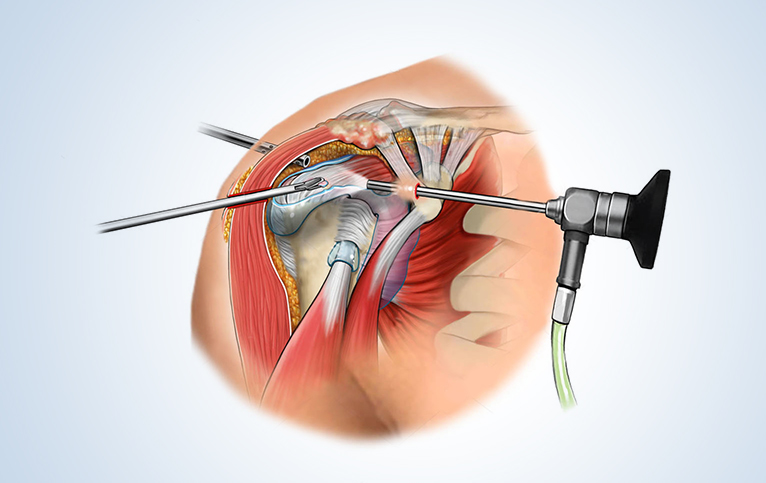Shoulder surgery is often recommended when conservative treatments like physical therapy and medication fail to alleviate shoulder pain or restore function. From rotator cuff repairs to shoulder replacements, understanding the various types of shoulder surgeries can help individuals make informed decisions about their treatment options. This comprehensive guide will explore the most common shoulder surgeries, the conditions they treat, and what to expect from the recovery process.
Types of Shoulder Surgeries
There are several surgical options available for treating different shoulder conditions. Each procedure addresses specific issues and requires varying degrees of recovery time.
1. Rotator Cuff Repair
The rotator cuff is a group of muscles and tendons that stabilize the shoulder joint. Injuries such as tears are common, particularly in athletes or individuals involved in repetitive overhead activities. Rotator cuff repair can be done using:
- Arthroscopic Surgery: A minimally invasive technique where small incisions are made to insert a camera and tools for the repair.
- Open Surgery: In cases of larger tears, open surgery might be required for a more extensive repair.
Recovery: Recovery can take several months and typically involves physical therapy to regain strength and flexibility.
2. Shoulder Replacement Surgery (Arthroplasty)
Shoulder replacement surgery is often recommended for individuals with severe arthritis or irreparable damage to the shoulder joint. There are two main types:
- Total Shoulder Replacement: Both the humeral head (upper arm bone) and the socket (glenoid) are replaced with artificial components.
- Reverse Shoulder Replacement: This is used in cases where the rotator cuff is severely damaged. The ball and socket configuration is reversed to allow other muscles to take over the shoulder’s movement.
Recovery: Patients usually regain normal function after several months of rehabilitation, but full recovery can take up to a year.
3. SLAP Tear Surgery
A Superior Labrum Anterior and Posterior (SLAP) tear affects the cartilage that lines the shoulder socket. Surgery involves repairing or trimming the damaged cartilage.
Recovery: Recovery typically involves six weeks of immobilization followed by several months of physical therapy.
4. Shoulder Stabilization Surgery
This surgery is often performed on individuals who experience frequent shoulder dislocations due to instability. The most common procedure is a Bankart repair, which reattaches and tightens the torn ligaments in the shoulder.
Recovery: Recovery can take anywhere from three to six months, with physical therapy playing a crucial role in restoring full shoulder function.
5. Acromioclavicular (AC) Joint Repair
Injuries to the AC joint, such as a separation, can result in significant pain and instability. Surgery is used to repair damaged ligaments and stabilize the joint.
Recovery: Rehabilitation can take around three to six months, depending on the extent of the injury.
Conditions That May Require Shoulder Surgery
Several conditions may lead to the need for shoulder surgery. These include:
- Rotator Cuff Tears
- Shoulder Arthritis
- Labral Tears (e.g., SLAP Tear)
- Shoulder Instability (Frequent Dislocations)
- Fractures
- Frozen Shoulder (Severe Cases)
The Recovery Process for Shoulder Surgery
Recovery times and rehabilitation plans vary depending on the type of surgery. Here’s a general breakdown:
- Immobilization: Most shoulder surgeries require immobilization of the shoulder in a sling for several weeks post-surgery.
- Physical Therapy: Physical therapy is critical in regaining strength and range of motion. The intensity and duration of therapy depend on the type of surgery.
- Pain Management: Pain management is an essential aspect of the post-surgery process. Physicians may prescribe medications to alleviate discomfort during the initial recovery stages.
- Return to Activity: Depending on the surgery, patients may begin light activity within a few weeks. However, full recovery and return to high-impact activities, such as sports, may take up to six months to a year.
Conclusion:
Shoulder surgery can dramatically improve the quality of life for those suffering from chronic shoulder conditions or injuries. Whether it’s repairing a torn rotator cuff or replacing an arthritic joint, understanding the surgical options and recovery process is key to successful outcomes.
Dr. Oladapo M. Babatunde, a distinguished board-certified orthopedic surgeon, is your trusted expert for shoulder surgery. With his extensive experience, Dr. Babatunde creates customized treatment plans tailored to each patient’s condition, helping them achieve their recovery goals. From diagnosis through rehabilitation, his focus on patient-centered care ensures the best possible results for each individual case.



